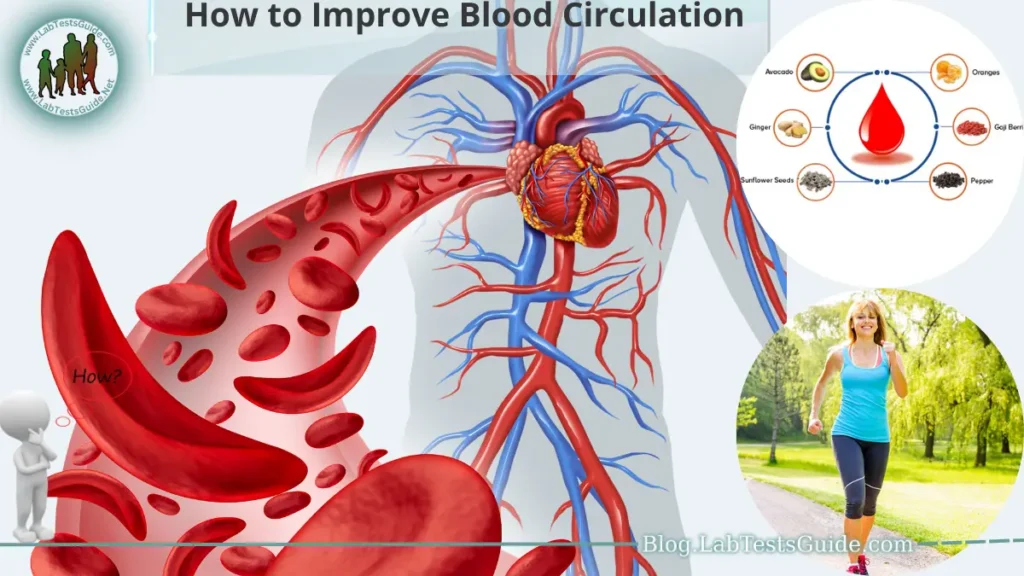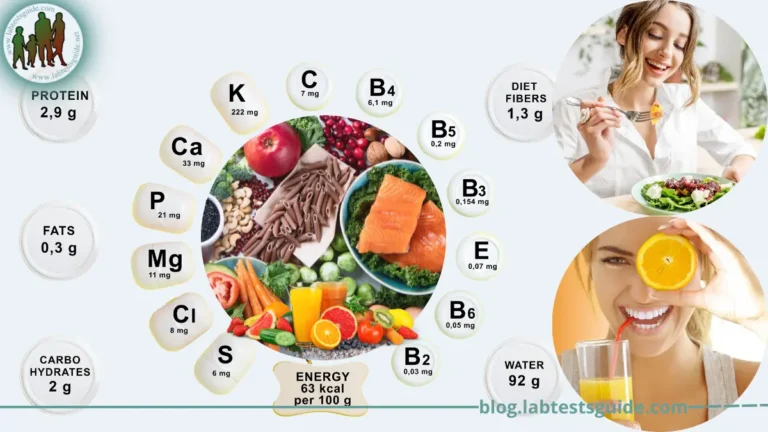Proper blood circulation is vital for the overall functioning and well-being of the human body. It is responsible for delivering oxygen, nutrients, and other essential substances to various organs and tissues, while also removing waste products and toxins. The circulatory system, comprising the heart, blood vessels, and blood, plays a crucial role in this process. When blood circulation is impaired, it can lead to a range of health issues, including cardiovascular problems, muscle cramps, cold extremities, and slower wound healing.

There are several factors that can contribute to poor blood circulation. Medical conditions such as atherosclerosis, diabetes, and peripheral artery disease can restrict blood flow and impair circulation. Additionally, lifestyle choices like leading a sedentary life, consuming an unhealthy diet, smoking, and excessive alcohol consumption can also have a negative impact on blood circulation. By understanding the significance of blood circulation and recognizing the causes of poor circulation, one can explore various strategies to improve blood flow and enhance overall health.
Lifestyle Changes for Improved Blood Circulation:
Here are some key lifestyle adjustments to consider.
- Regular Physical Exercise: Engaging in regular physical activity is crucial for improving blood circulation. Cardiovascular exercises like brisk walking, running, cycling, or dancing help strengthen the heart, increase blood flow, and improve the efficiency of the circulatory system. Aim for at least 150 minutes of moderate-intensity aerobic exercise per week, along with strength training exercises to promote overall fitness.
- Healthy Diet and Hydration: Adopting a balanced and nutritious diet is essential for optimal blood circulation. Include foods rich in antioxidants, such as fruits, vegetables, and whole grains, as they help reduce inflammation and promote healthy blood vessels. Omega-3 fatty acids found in fatty fish, nuts, and seeds can also support cardiovascular health. Additionally, staying well-hydrated by drinking an adequate amount of water throughout the day helps maintain proper blood volume and fluidity.
- Maintaining a Healthy Weight: Maintaining a healthy weight is beneficial for blood circulation. Excess weight can strain the circulatory system and increase the risk of conditions like diabetes and heart disease. Incorporate a well-balanced diet, portion control, and regular physical activity to achieve and maintain a healthy weight range.
- Avoiding Smoking and Limiting Alcohol Intake: Smoking has a detrimental effect on blood circulation as it constricts blood vessels and reduces oxygen levels in the blood. Quitting smoking or avoiding exposure to secondhand smoke is crucial for improving circulation. Additionally, excessive alcohol consumption can also negatively impact blood flow. Limit alcohol intake or avoid it altogether to promote healthy circulation.
- Managing Stress Levels: Chronic stress can contribute to poor blood circulation. Practice stress management techniques such as deep breathing exercises, meditation, yoga, or engaging in hobbies and activities that help you relax. Managing stress effectively promotes healthy blood vessel function and overall circulation.
Specific Exercises and Activities to Improve Blood Circulation:
Here are some examples:
- Cardiovascular Exercises: Cardiovascular exercises are excellent for improving blood circulation as they raise the heart rate and increase blood flow. Engage in activities such as brisk walking, jogging, cycling, swimming, or aerobic dance. Aim for at least 30 minutes of moderate-intensity cardiovascular exercise most days of the week.
- Strength Training and Resistance Exercises: Strength training exercises help build muscle mass, which in turn improves blood circulation. Include exercises such as weightlifting, bodyweight exercises, resistance band workouts, or using weight machines. Focus on targeting major muscle groups, such as the legs, arms, back, and core, and aim for two to three strength training sessions per week.
- Stretching and Flexibility Exercises: Stretching exercises can promote blood circulation by improving flexibility, reducing muscle tension, and increasing range of motion. Incorporate activities like yoga, Pilates, or static stretches that target different muscle groups. Hold each stretch for 15 to 30 seconds and repeat several times for optimal benefits.
- Deep Breathing and Relaxation Techniques: Deep breathing exercises and relaxation techniques can help improve blood circulation by reducing stress and promoting relaxation. Practice deep breathing exercises, meditation, or mindfulness techniques regularly to enhance oxygen intake, lower heart rate, and improve overall circulation.
It’s important to consult with a healthcare professional or a qualified fitness instructor before starting any new exercise program, especially if you have underlying health conditions or are new to exercise. They can provide guidance and tailor an exercise plan that suits your specific needs and abilities.
Remember to start gradually and listen to your body. Over time, consistent engagement in these exercises and activities will promote better blood circulation, overall cardiovascular health, and enhance your well-being.
What are Specific Exercises to Improve Blood Circulation:
- Walking: Walking is a low-impact exercise that can be done anywhere and at any time. Brisk walking, in particular, increases heart rate and promotes blood flow throughout the body.
- Jogging or Running: Jogging or running elevates the heart rate and engages multiple muscle groups, which boosts circulation and cardiovascular fitness.
- Cycling: Whether on a stationary bike or outdoors, cycling is a great exercise for improving blood circulation in the lower body. It strengthens leg muscles and enhances cardiovascular health.
- Swimming: Swimming is a whole-body exercise that provides resistance and helps improve circulation while being gentle on the joints.
- Jumping Jacks: Jumping jacks are a simple and effective exercise that gets your heart pumping and increases blood flow to various parts of the body.
- High-Intensity Interval Training (HIIT): HIIT workouts involve short bursts of intense exercise followed by brief recovery periods. This type of training promotes cardiovascular health, increases blood circulation, and improves overall fitness.
- Yoga: Certain yoga poses, such as forward bends, inversions (e.g., downward dog, headstand), and twists, can enhance blood flow to specific areas of the body and promote overall circulation.
- Pilates: Pilates exercises focus on core strength, stability, and flexibility, which can indirectly improve blood circulation by promoting overall body health and functionality.
- Resistance Band Exercises: Using resistance bands can provide resistance throughout a range of motion, targeting various muscle groups and promoting blood circulation.
- Tai Chi: Tai Chi is a gentle, low-impact exercise that incorporates slow, flowing movements and deep breathing. It can help improve circulation, balance, and overall well-being.
Remember to start any new exercise program gradually and listen to your body. If you have any underlying health conditions or concerns, consult with a healthcare professional or a qualified fitness instructor to ensure you choose appropriate exercises for your needs and abilities.
Dietary Recommendations for Better Blood Circulation:
Here are some dietary recommendations to improve blood circulation.
Foods That Promote Healthy Blood Circulation:
- Omega-3 Fatty Acids: Include fatty fish (salmon, mackerel, sardines), flaxseeds, chia seeds, and walnuts, as they contain omega-3 fatty acids that support cardiovascular health and blood flow.
- Antioxidant-Rich Foods: Consume fruits and vegetables rich in antioxidants, such as berries, citrus fruits, leafy greens, and bell peppers, to reduce oxidative stress and support blood vessel health.
- Nitrate-Rich Foods: Foods like beets, spinach, arugula, and pomegranates are high in nitrates, which can enhance blood vessel function and promote circulation.
- Dark Chocolate: Dark chocolate with a high cocoa content (70% or more) contains flavonoids that have vasodilatory effects and may improve blood flow.
- Garlic: Incorporate garlic into your meals, as it has been associated with improved blood circulation and reduced blood pressure.
Foods to Avoid or Limit for Improved Circulation:
- Saturated and Trans Fats: Limit the consumption of foods high in saturated and trans fats, such as fatty meats, fried foods, processed snacks, and commercially baked goods, as they can contribute to artery blockages and impede blood flow.
- Sodium: Reduce your intake of high-sodium foods, such as processed and packaged foods, as excessive sodium can lead to high blood pressure and negatively affect circulation.
- Refined Carbohydrates and Added Sugars: Minimize the consumption of refined carbohydrates (white bread, pasta, sugary cereals) and added sugars (soda, sweets, sugary drinks) as they can contribute to inflammation, weight gain, and cardiovascular issues.
Importance of Proper Hydration:
- Maintain adequate hydration by drinking plenty of water throughout the day. Proper hydration helps maintain optimal blood volume and fluidity, supporting healthy blood circulation. Limit or avoid excessive consumption of caffeinated beverages and alcohol, as they can contribute to dehydration.
It’s important to note that these dietary recommendations are general guidelines. Individual dietary needs may vary based on factors such as age, sex, underlying health conditions, and personal preferences. Consulting with a registered dietitian or healthcare professional can provide personalized guidance and recommendations based on your specific needs and goals.
Natural Remedies and Supplements for Blood Circulation:
Herbal Remedies and Supplements:
- Ginkgo Biloba: This herb is believed to enhance blood circulation by dilating blood vessels and improving blood flow. It may be beneficial for certain circulatory conditions, but consult with a healthcare professional before using it, especially if taking blood-thinning medications.
- Cayenne Pepper: Capsaicin, the active compound in cayenne pepper, may improve blood circulation by promoting blood vessel dilation. It can be consumed orally or applied topically as a cream or ointment.
- Horse Chestnut: Extracts from horse chestnut seeds have been traditionally used to support vein health and improve circulation. However, consult with a healthcare professional before using it, as it may interact with certain medications.
Essential Oils for Circulation Enhancement:
- Rosemary Oil: Known for its stimulating properties, rosemary oil may help improve blood circulation. It can be used in aromatherapy or diluted and applied topically with a carrier oil.
- Peppermint Oil: Peppermint oil has a cooling effect and may promote blood flow when applied topically. It can be diluted with a carrier oil and used in massage or added to a foot soak.
Cold and Warm Water Therapy:
- Contrast Hydrotherapy: Alternating between cold and warm water therapy can help stimulate blood circulation. Start with warm water for a few minutes, then switch to cold water for a shorter duration. Repeat the cycle a few times, always ending with cold water. This technique may improve blood flow and promote vascular health.
Other Strategies to Enhance Blood Circulation:
Here are some examples:
- Wearing Compression Stockings: Compression stockings apply gentle pressure to the legs, helping to improve blood flow and prevent blood pooling. They can be particularly beneficial for individuals with venous insufficiency, varicose veins, or those who spend long periods sitting or standing. Consult with a healthcare professional to determine the appropriate compression level and fit.
- Elevating Legs and Feet: Raising your legs and feet above heart level can assist in improving blood circulation, especially for individuals who experience swelling or edema. Whenever possible, elevate your legs by propping them up on a cushion or using a leg rest. This helps facilitate venous blood flow back to the heart.
- Avoiding Prolonged Sitting or Standing: Sitting or standing for extended periods can hinder blood circulation. Take regular breaks to move around, stretch, and flex your muscles. If you have a sedentary job, consider using a standing desk or taking short walks throughout the day to encourage better blood flow.
- Massage and Acupressure Techniques: Massage and acupressure can help improve blood circulation by stimulating the blood vessels and relaxing muscles. Gentle massage or self-massage techniques, focusing on the legs, arms, and other areas of concern, can promote blood flow and relieve tension. Acupressure, which involves applying pressure to specific points on the body, may also aid in improving circulation.
- Regular Health Check-ups and Medical Treatment: Regular health check-ups allow for early detection and management of any underlying conditions that may affect blood circulation. Conditions like diabetes, high blood pressure, and high cholesterol should be monitored and treated appropriately. Follow your healthcare provider’s recommendations and take prescribed medications as directed to promote better circulation and overall cardiovascular health.
Remember, while these strategies can be beneficial for enhancing blood circulation, it’s essential to consult with a healthcare professional for personalized advice and guidance, especially if you have specific health concerns or medical conditions. They can provide tailored recommendations based on your individual needs and help you optimize your circulatory health.
How to Improve Blood Circulation:
Here are some key steps to improve blood circulation.
- Stay Active and Exercise Regularly: Engage in regular physical activity and exercises that get your heart pumping. Cardiovascular exercises like brisk walking, jogging, cycling, or swimming help strengthen the heart, improve blood vessel health, and promote blood flow throughout the body.
- Maintain a Healthy Diet: Adopt a balanced diet that includes plenty of fruits, vegetables, whole grains, lean proteins, and healthy fats. These foods provide essential nutrients, antioxidants, and omega-3 fatty acids that support cardiovascular health and help improve blood circulation.
- Stay Hydrated: Drink an adequate amount of water throughout the day to maintain proper blood volume and fluidity. Good hydration supports healthy blood flow and overall circulation.
- Avoid Smoking and Limit Alcohol Intake: Smoking damages blood vessels, restricts blood flow, and decreases oxygen levels in the blood. Quitting smoking or avoiding exposure to secondhand smoke is crucial for improving circulation. Excessive alcohol consumption can also negatively affect blood flow, so it’s important to limit alcohol intake or avoid it altogether.
- Manage Stress Levels: Chronic stress can contribute to poor circulation. Practice stress management techniques such as deep breathing exercises, meditation, yoga, or engaging in hobbies and activities that help you relax. Managing stress effectively promotes healthy blood vessel function and overall circulation.
- Maintain a Healthy Weight: Being overweight or obese can put extra strain on the circulatory system and impede blood flow. Aim to maintain a healthy weight through a balanced diet and regular exercise to support better circulation.
FAQs:
Can poor blood circulation be a sign of an underlying health condition?
Yes, poor blood circulation can be a symptom or result of underlying health conditions such as atherosclerosis, peripheral artery disease, diabetes, or venous insufficiency. If you are concerned about your circulation, it is important to consult with a healthcare professional for proper evaluation and diagnosis.
Can exercise alone improve blood circulation?
Regular exercise, particularly cardiovascular exercises, can significantly improve blood circulation. Exercise helps strengthen the heart, improve blood vessel health, and promote efficient blood flow. However, it is essential to combine exercise with other lifestyle modifications, such as a healthy diet and avoiding smoking, for optimal results.
Are there specific foods that can naturally improve blood circulation?
Yes, certain foods can promote healthy blood circulation. Foods rich in omega-3 fatty acids (fatty fish, nuts), antioxidants (fruits, vegetables), and nitrates (beets, leafy greens) can support cardiovascular health and enhance blood flow. Additionally, garlic and dark chocolate have been associated with improved circulation. However, it is important to maintain an overall balanced diet and not rely solely on individual foods for circulation improvement.
Can stress affect blood circulation?
Yes, chronic stress can negatively impact blood circulation. Stress can cause blood vessels to constrict and increase blood pressure, leading to reduced blood flow. Managing stress through relaxation techniques, exercise, and stress-reduction strategies can help improve blood circulation.
Can wearing compression stockings improve blood circulation?
Compression stockings can be beneficial for improving blood circulation, particularly in cases of venous insufficiency or varicose veins. These stockings provide graduated compression that helps support the veins, reduce swelling, and promote blood flow back to the heart. Consult with a healthcare professional to determine if compression stockings are appropriate for your specific condition.
Conclusion:
Improving blood circulation is essential for maintaining overall health and well-being. By adopting a combination of lifestyle changes, specific exercises, dietary adjustments, and other strategies, you can enhance blood flow, support healthy blood vessels, and reduce the risk of circulation-related issues.






